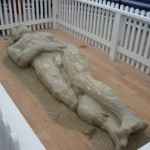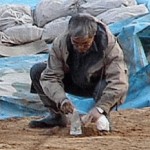Unfortunately in the world of archaeology you cannot trust everything you hear. In order to mislead the public for some purpose, archaeologists (or usually people posing as archaeologists) will manipulate and fake archaeological data. This faking of data for some purpose is known as an archaeological hoax. Fake data can mislead actual scientists, contaminate the archaeological record and skew people’s understanding of the past. When considering archaeological hoaxes, questions arise: what are the purposes behind these hoaxes? How are the hoaxers able to make the public believe them? It is important to be aware that archaeological hoaxes exist, and not to let them distort your historical view.
There can be many purposes behind an archaeological hoax. The hoaxer may be prompted by personal reasons such as fame and money. There may be religious reasons behind a hoax, such as trying to validate a religious story. In Frauds, Myths and Mysteries by Kenneth L. Feder, Feder discusses how in 1869 a giant “petrified” man was found buried on a farm in Cardiff, NY, who became known as the Cardiff Giant. Until this find was determined to be a hoax (a statue planted in the ground only about a year before it was “found”), the petrified man validated biblical stories of giants such as David and Goliath.
Nationalism can also prompt a hoax, for instance when a country seeks to have the “oldest” of something. In the case of the Piltdown Man, fragments of a human skull and ape-like jaw bone were found in England in 1912. Because the bones seemed to go together, it was thought for the next 40 years that an early human ancestor had been discovered. Fossils of Neanderthals had already been discovered in France and Germany, so it brought England great pride that they could now also claim to have played a part in human evolution. However, in the late 1940s after dating techniques had been developed it was determined that the Piltdown Man skull and jaw were neither ancient nor from the same species, the skull being human and the jaw from an orangutan, and that it had all been a hoax (Bartlett).
People believe hoaxes because they convey ideas that people want to believe, especially regarding religion or nationalism. They are not immediately called into question because people want them to be true. Beginning in the 1980s and continuing until the year 2000, an amateur prehistorian named Shinichi Fujimura was planting ancient artifacts from other Asian countries in Japanese sites to make it seem that Japan had a more extensive prehistory. Because of Japan’s national pride in these discoveries, no one questioned the validity of the finds as they accumulated for twenty years.
After the truth came out about Fujimura’s hoax the legitimacy of the approximately 180 sites he had worked on vanished (Feder). In scientific fields such as archaeology it is important to disregard the desire to immediately believe discoveries and their interpretations and question everything. Only through questioning and retesting can hoaxes be discovered and eliminated from the archaeological record.
For a list of archaeological hoaxes see: http://www.archaeology.org/online/features/hoaxes/


